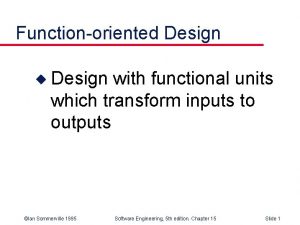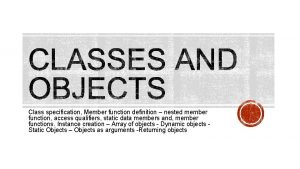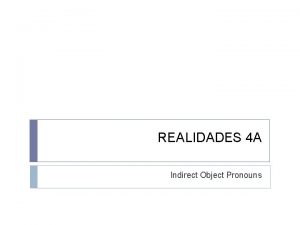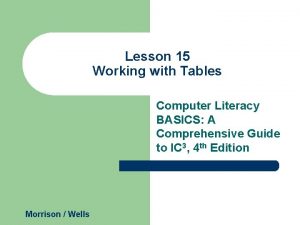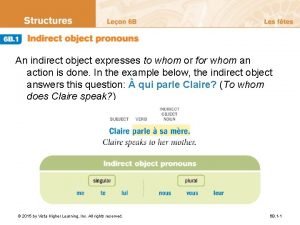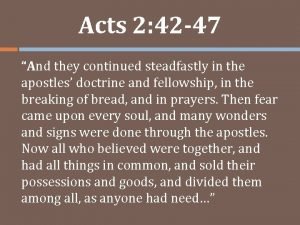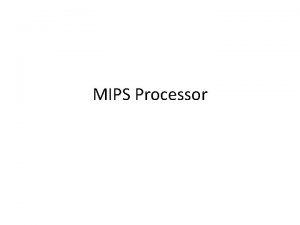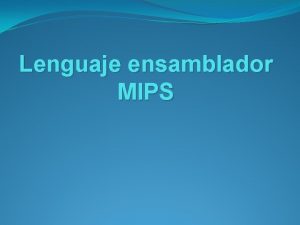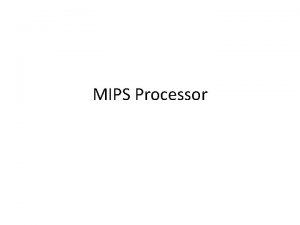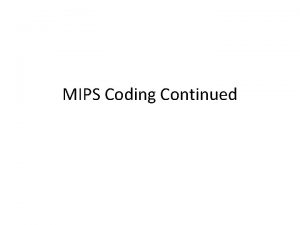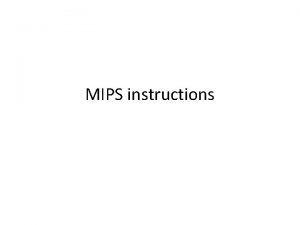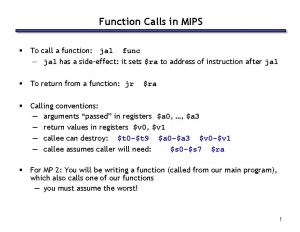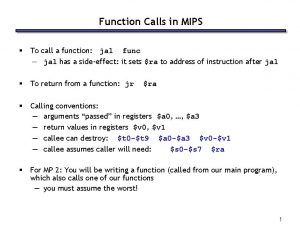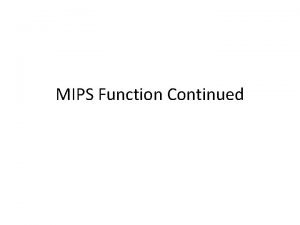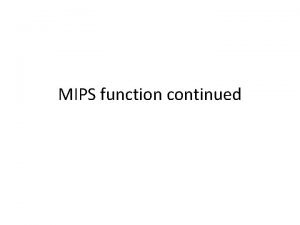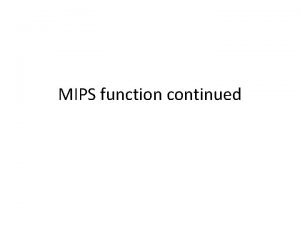MIPS Function Continued Function calls inside a function














- Slides: 14

MIPS Function Continued

Function calls inside a function • What if we need to call another function inside a function? Will this work? twofun: addi $sp, -4 sw $s 0, 0($sp) jal addfun srl $s 0, $a 0, 1 sub $v 0, $s 0 lw $s 0, 0($sp) addi $sp, 4 jr $ra

Function calls inside a function • The problem is that the value of $ra is changed whenever you use jal somelabel. • How to deal with it? twofun: addi $sp, -4 sw $s 0, 0($sp) jal addfun srl $s 0, $a 0, 1 sub $v 0, $s 0 lw $s 0, 0($sp) addi $sp, 4 jr $ra

The working versions twofun 1: addi $sp, -4 sw $s 0, 0($sp) addi $sp, -4 sw $ra, 0($sp) twofun 2: addi $sp, -8 sw $s 0, 4($sp) sw $ra, 0($sp) jal addfun srl $s 0, $a 0, 1 sub $v 0, $s 0, lw $ra, 0($sp) addi $sp, 4 lw $s 0, 0($sp) addi $sp, 4 jal addfun srl $s 0, $a 0, 1 sub $v 0, $s 0, lw $ra, 0($sp) lw $s 0, 4($sp) addi $sp, jr $ra 8 jr $ra

Saving registers • In case of nested function calls, before calling a function, to be safe, the caller should – save $t 0 -$t 9 – save $a 0 -$a 3 If such registers are needed later. and – save $ra Because $ra is going to be needed later and it will be changed • The callee should – save $s 0 -s 7


Questions Which of the following statements about MIPS stack is true? (a) If a function has to modify $sp, it can save $sp on the stack by a “sw $sp, 0($sp)” instruction and restore it later by a “lw $sp, 0($sp)” instruction. (b) A “push” operation adds a new number to the stack. “push $t 0” can be implemented as a pseudo instruction as “sw $t 0, -4($sp). ” (c) Both of the above. (d) None of the above.


Character and String Operations • Characters are encoded as 0’s and 1’s using ASCII most commonly – American Standard Code for Information Interchange – Each character is represented using 8 bits (or a byte) • MIPS provides instructions to move bytes – Load byte (lb) loads a byte to the rightmost 8 bits of a register – Store byte (sb) write the rightmost 8 bits of a register to memory 3/5/2021 week 04 -3. ppt 9

SPIM syscalls li $v 0, 1 li $a 0, 100 syscall # print an integer in $a 0 li $v 0, 5 syscall # read an integer into $v 0 li $v 0, 4 # print an ASCIIZ string at $a 0 la $a 0, msg_hello syscall li $v 0, 10 syscall #exit

String Copy Procedure 3/5/2021 week 04 -3. ppt 11

. data msg_hello: . asciiz "Hellon“ msg_empty: . space 400 Main: . text. globl main li $v 0, 4 la $a 0, msg_hello syscall li $v 0, 4 la $a 0, msg_empty syscall la $a 0, msg_empty #dst la $a 1, msg_hello #src jal strcpy li $v 0, 4 la $a 0, msg_empty syscall li $v 0, 10 #exit syscall strcpy: lb $t 0, 0($a 1) sb $t 0, 0($a 0) addi $a 0, 1 addi $a 1, 1 bne $t 0, $0, strcpy jr $ra

Stack • Key things to keep in mind: – Stack is a software concept – last in first out, that’s it. – In MIPS, you implement the stack by yourself by keeping $sp always pointing to the top element on the stack – Stack can be used in functions to save register values, and is the standard approach to save register values. But • You can also use stack for other purposes • This is not the only way to save register values.

. data. asciiz "hello msg: world" endl: . asciiz "n" main: L 0: . text. globl main addi $sp, -1 sb $0, 0($sp) la $t 1, msg lb $t 0, 0($t 1) beq $t 0, $0, L 1 addi $sp, -1 sb $t 0, 0($sp) addi $t 1, 1 j L 0 L 1: L 2: la $t 1, msg lb $t 0, 0($sp) addi $sp, 1 sb $t 0, 0($t 1) beq $t 0, $0, L 3 addi $t 1, 1 j L 2 L 3: la $a 0, msg li $v 0, 4 syscall la $a 0, endl li $v 0, 4 syscall li $v 0, 10 #exit syscall
 Dfd ch15
Dfd ch15 Nested member function in c++
Nested member function in c++ The sequence of statements inside a function definition
The sequence of statements inside a function definition Romeo and juliet act ii scene 2
Romeo and juliet act ii scene 2 Dramatic irony in act 4 of romeo and juliet
Dramatic irony in act 4 of romeo and juliet Capítulo 4a indirect object pronouns (continued answers)
Capítulo 4a indirect object pronouns (continued answers) Position cost distribution
Position cost distribution Signal words examples
Signal words examples Table continued
Table continued Continued abbreviation
Continued abbreviation Semi colon vs colon
Semi colon vs colon Demonstrative adjectives continued answers
Demonstrative adjectives continued answers Indirect object pronouns continued
Indirect object pronouns continued Professional adjectives
Professional adjectives They continued steadfastly
They continued steadfastly
